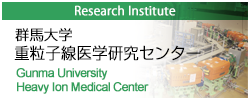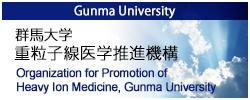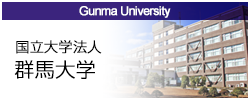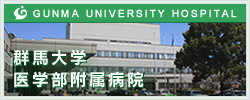Outline of GHMC
The Creation of GHMC
Gunma University Heavy Ion Medical Center (GHMC) was established on June 1, 2005 to improve heavy-ion radiotherapy based on radiation biology and clinical studies, to develop related techniques for new treatment methods, and to promote studies relating to heavy-ion medicine.
Gunma University has played a leading role in radiation oncology and nuclear medicine in Japan. In particular, the Department of Radiation Oncology has produced approximately 10% of the board certified radiation oncologists of Japanese Society for Therapeutic Radiology and Oncology (JASTRO). We have also worked closely with National Institute of Radiological Sciences (NIRS) and Takasaki Advanced Radiation Research Institute, Japan Atomic Energy Agency (TAKASAKI, JAEA), two of the most important national institutions for radiation research and technology in Japan.
We have undertaken joint studies on radiation biology and radiation cancer therapy with NIRS since the construction of the heavy ion medical accelerator in Chiba (HIMAC), Japan. In 2004 we initiated joint studies on advanced treatment techniques using a compact heavy-ion irradiation system developed at NIRS. In April 2006 Gunma University and NIRS concluded an agreement for comprehensive coordination and cooperation on studies of heavy-ion cancer therapy. GHMC &NIRS have thus established a cooperative framework for research and development as well as for the training of specialists.
At TAKASAKI JAEA, the Cooperative Department of Quantum Biology was established as a subdivision of Gunma University Graduate School of Medicine in April 2003 to promote medical and biological research using radiation. Another aim of the department is to train researchers who specialize in biology and medicine. In 2004 the 21st Century Center of Excellence (COE) Program “Biomedical Research Using Accelerator Technology” was granted by the Japanese government. Under this program we carried out fundamental studies on cell response of heavy ions and development studies on high-precision carbon-ion micro-surgery treatment techniques for small cancers and capillary diseases such as age-related macular degeneration in the retina.
Establishment of the Heavy-Ion Facility
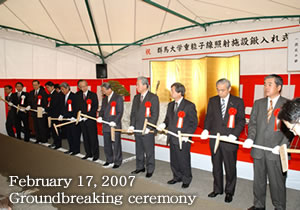
In 2001 Gunma University initiated the project to install a heavy-ion irradiation system at the medical school which would draw on the university’s vast experience in radiation oncology and nuclear medicine. The establishment of the center shows the commitment of the university to assume a leading role in heavy-ion radiotherapy. Consequently, the Japanese government in 2006 approved the construction of a heavy-ion irradiation facility as a joint project between Gunma University and Gunma Prefecture. In 2006 the preparations for facility construction were completed, and the groundbreaking ceremony was held on February 17, 2007 . The construction of the facility was completed in the 2008 fiscal year, and clinical trials began in the 2009 fiscal year.
Principal Activities of GHMC
- Construction of the heavy-ion irradiation facility and equipment
- Development of the medical system for operating heavy-ion radiotherapy
- Research on highly accurate heavy-ion radiotherapy
- Research & Development of new techniques for heavy-ion radiotherapy
- Research on biological response to heavy ion radiation

